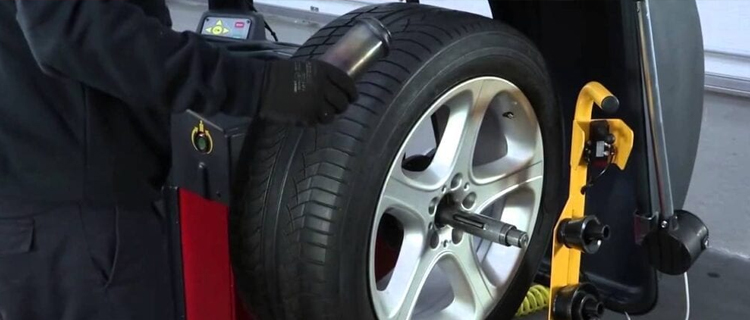Wheel Balancing Breakdown: Top-5 Consumer Questions Answered
April 9, 2021
Tires

You’ve got wheel balancing questions; we’ve got wheel balancing answers. Read on for a quick wheel balancing breakdown, or contact your local TIRECRAFT to speak directly with a wheel balancing specialist near you.
1. Are Wheel Balancing And Wheel Alignment Synonymous?
No, wheel balancing and wheel alignment are two different and equally necessary procedures. Put simply, wheel alignment is about perfecting the angle of your wheels, whereas wheel balancing involves adding weights to offset any imbalances between the tire and wheel.
Generally speaking, wheel balancing problems usually underlie any heavy vibration, whereas wheel alignment issues tend to manifest as uneven tread wear and/or the vehicle pulling to one side or the other.
If you need help determining which of these services you need, or you want to learn more about what our wheel balancing service entails, contact your local TIRECRAFT.
2. Why Is Wheel Balancing Important?
In a perfect world, all wheel assemblies would be perfectly balanced, right at the center point of the axle, allowing them to spin perfectly at any speed, with even weight distribution on all sides.
But wheels and tires aren’t manufactured in a perfect world—and they’re rarely manufactured with a specific vehicle in mind. Although tires are built to extremely tight tolerances, weight imbalances are unavoidable. Accordingly, almost every wheel has some kind of imbalance or “heavy spot,” as does every tire. Together, these minor imbalances create major problems, compromising the exact center and causing uneven rotation, rotation that may even cause wheels to hop and wobble on the road.
In fact, when driven at speeds of 100km/h, even a small half-ounce imbalance on a 40-pound wheel assembly creates an outward centrifugal force equal to that of a sledgehammer! Beyond reducing your control and comfort behind the wheel, this high-impact wear can wreak havoc on your car’s components.
3. What Are The Warning Signs Of Improper Wheel Balancing?
- You feel significant vibration in the steering wheel, floorboard, or through your seat
- You notice a weight that used to be on the rim has fallen off
- You notice uneven tire wear
- You feel tires “hopping” or wobbling
4. How Often Do I Need To Book A Wheel Balancing Service?
Unless you detect any of the symptoms described in question #3, you’ll only need to book a wheel balancing service every 12 months or 20,000km of driving—whichever comes first. It’s also a good idea to invest in wheel balancing whenever you change tires, whether that’s because of a rotation, a seasonal changeover, or a flat repair.
5. How Much Does Wheel Balancing Service Cost?
Depending on your vehicle’s make and model, the average cost for a 4-wheel balancing ranges between $40 and $100. That’s about the cost of an oil change, and most people only need one per year.
Book A Free Wheel Balancing Consultation At TIRECRAFT
Use the Find a TIRECRAFT tool to find one of our 250+ locations near you and start racking up MyTIRECRAFT rewards points today!
Back

